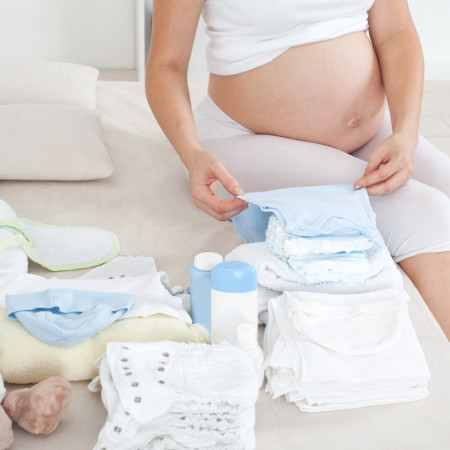
Preparing for your baby’s arrival
Baby is on the way
You will have new and more pressing questions towards the end of your pregnancy. Now is the time to make material arrangements for your baby’s arrival in your home.
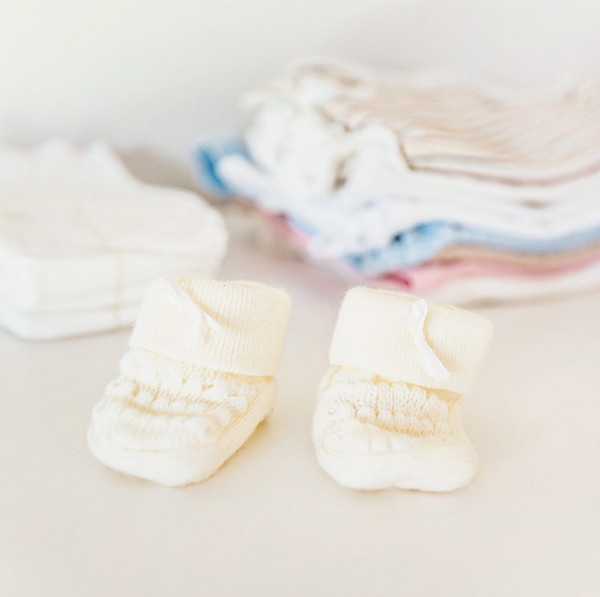
Basic baby clothes
3 clothing sizes cover the first 6 months. Remember that the “birth” size only fits babies with low birth weights, such as twins or preemies. Look for size 1 outfits.
Don’t buy too many of these ahead of time so you don’t get things wrong, but do have a change of clothes in between washes.
You will mostly need pyjamas, vests, and a wool or cotton cardigan depending on the season, slippers, socks, a baby bonnet, bunting, or a warm pram suit for baby’s first outing.
Towels or a towelling poncho for baths.
2 important items to keep your baby comfortable and safe:
- short and long-sleeved cotton bodysuits with snaps to quickly slip them on baby without pulling them over her head.
- a sleeping bag or bunting: layer this over baby’s pyjama instead of using a duvet, which is dangerous. Choose the right thickness for your climate and for the temperature in your home. You can use a warmer playsuit with sleeves instead.
Furnishing your baby’s room
With some basic precautions, your baby will be safe in her room, which should be easy to clean:
- make sure it has smooth flooring, with no sharp corners at head level for when she starts crawling.
- power outlets should be out of reach or have secure socket covers.
- avoid carpeting, rugs, and thick curtains to prevent allergies and exposing baby to mites.
- if you want to renovate her bedroom, do so several weeks before your due date: paint and new furnishings can sometimes release toxic fumes.
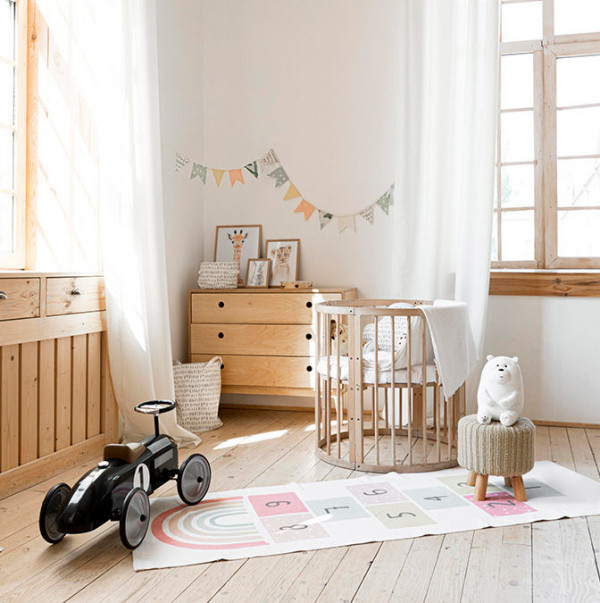
Bed
A crib or a cot?
Use a crib until your baby is 3 months old.
She will sleep in her cot until she is 2 or 3 years old.
Her crib and cot must be stable and meet the highest safety standards:
- if the inner lining is made of fabric, you should be able to remove and wash it.
- if the cot has bars, the spacing between them should be between 45cm and 65mm.
Mattresses should be firm and adapted to the frame to make sure that baby won’t get stuck in a gap. Cover the mattress with an underpad to protect small accidents, which are bound to happen.
Your midwife and paediatrician will recommend that you let baby sleep in her sleeping bag, without a pillow or a duvet to avoid any risk of suffocation.
Protect her sleep area with a mosquito net if necessary.
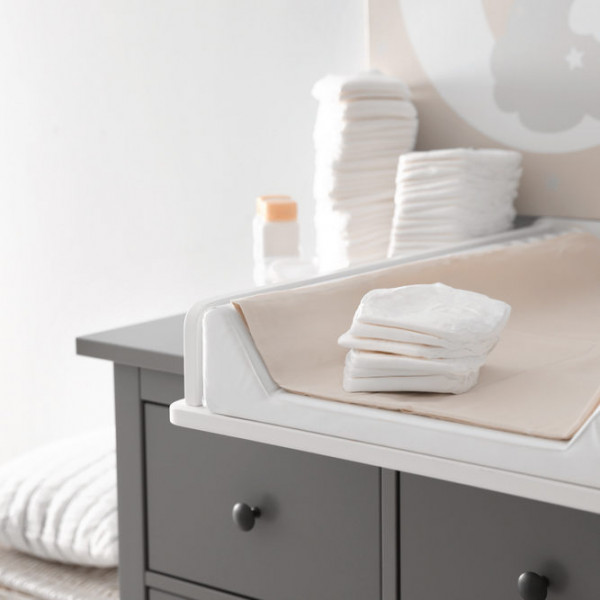
Changing units
Most importantly, it must be very stable, so your baby doesn’t fall when she wiggles around.
If you can, put in the bathroom, near a sink for easy washing, or in her bedroom.
At first, you may bathe baby in a sink, but you will want to invest in a baby tub as she grows.
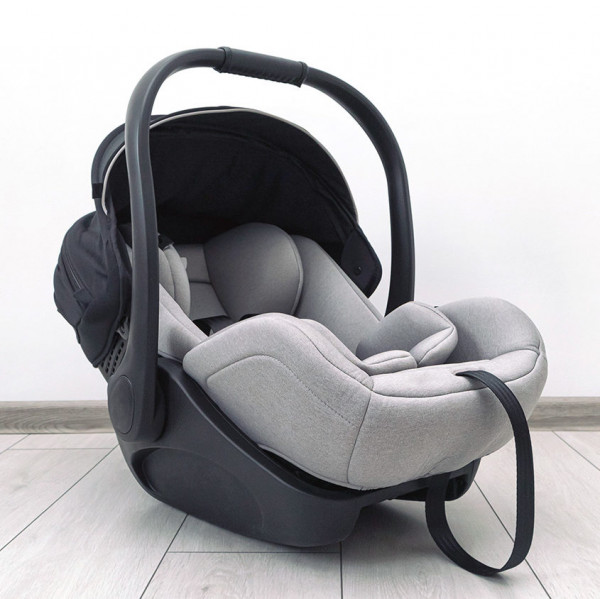
Seats
What you need most urgently is a car seat or a carrycot since you will be using one when leaving the maternity unit. All models are fitted with safety locks. Some are multifunctional: they can be carried by hand like a basket or clipped onto a car seat base or a pram. Generally speaking, they should only be used to transport your baby from one place to another. Using them too much might hinder your baby’s motor development.
Being well prepared
Check out our suggestions on baby equipment and things to pack in your maternity bag.
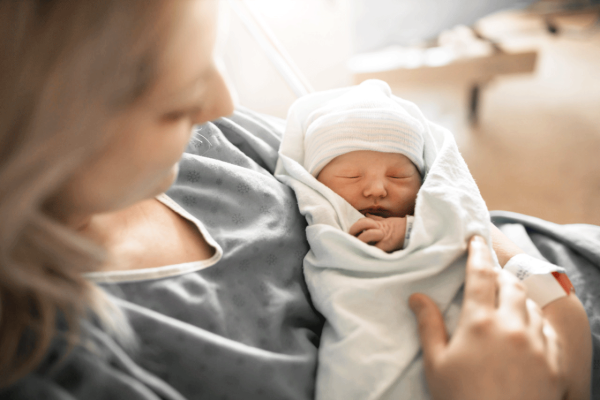
Ready for birth
Identify the signs of pre-labour, be ready for the different stages of childbirth, prepare your mind and body for birthing, prepare your overnight bag and your baby’s… Having your ducks in a row will help you be in charge of this life-changing event.
Preparing for birth
Good childbirth preparation will help you feel more relaxed, so you can experience your last months of pregnancy with more peace of mind. Your midwife will advise you on antenatal classes that are the most adapted to your needs. Be sure to discuss this with her.
The general idea is to learn simple relaxation and breathing techniques for muscle relaxation.
These methods will also help you recover from pregnancy by helping you maintain your flexibility and muscle tone.
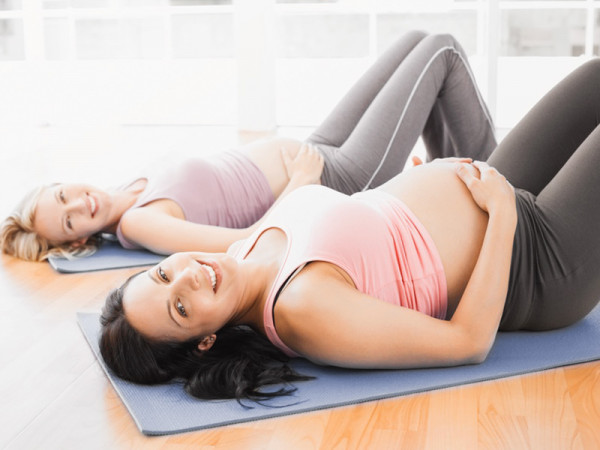
Antenatal approaches
Yoga
Yoga teaches you how to listen to your body and manage fatigue, insomnia, anxiety, and muscle pain. It works on the breath, flexibility, and muscle tone.
Perinatal haptonomy
This method can be practised as a couple or with a close friend. It aims to improve bonds of affection, prepares you for parenthood, and reduces tension and back pain. Gets you used to positions that will help you during birth.
Sophrology
Focusing on letting go and self-awareness, this effective relaxation method induces a sleep-like state and teaches you how to release your tensions.
Pool preparation
A great aid for relaxation, since the weight of your body is supported by water. Swimming is a gentle way of maintaining your muscle tone while providing relief to back pain and general tension. It also improves blood flow and bowel function.
Preparing for birth as a group will also provide opportunities to connect with other future mums.

Childbirth methods
There are two different methods of childbirth: natural vaginal delivery or caesarean section.
Vaginal delivery is the natural method
Baby arrives head first. It is possible that baby will not turn around: this is referred to as a breach birth, and is a little more complicated. Most of the time, baby presents normally: delivery involves no particular risk and takes place naturally. Waters breaking, cervical dilation, birth and delivery proceed over a variable period of time. Birth can be induced if it is taking too long, if term has been exceeded or if there is a risk to the mother or child.
Caesarean section
Is the option taken by the medical team when there is a risk for the mother or child, for example if the baby is incorrectly positioned, the mother’s pelvis is too narrow, or the baby is premature or shows signs of foetal distress. For all these reasons, a caesarean section may either be planned in advance or decided at the last minute. A caesarean involves incision of the mother’s stomach under local anaesthetic.
Our answers to your questions
-
The onset of labour is not always obvious, especially if this is your first pregnancy. One of the main signs of labour is long, regular, painful uterine contractions, which you will feel in the abdomen and lower back.
-
- They have a distinctive rhythm.
- They will come closer and closer together and will be increasingly longer, intense, and painful.
- You will start “checking out” from reality.
- Walking between contractions will be difficult.
Good to know: Try not to stiffen your body when a contraction comes. Instead, relax your muscles and focus on breathing deeply to enhance dilation.
-
- Though you may not notice it, your mucous plug will dislodge about 24 to 48 hours before the real onset of childbirth. This happens as the cervix starts to open.
- Waters break: the amniotic sac may break at different moments. Sometimes, your midwife will break the waters herself. This causes a whitish liquid to leak. Amniotic fluid continually replenishes, so your baby will continue to bathe in it until birth.
In all three cases, it is time to head for the maternity unit. If you are travelling, try to lie down or to keep your body reclined. If you are giving birth at home, call your midwife.
-
If birth is imminent, you will receive immediate care.
Otherwise, you will have time to fill out paperwork. You will first head to the examination room, where a midwife will check your weight, blood pressure, temperature, and will measure your dilatation to see how far along you are. As your cervix dilates, you will be taken to a room where you will be monitored by midwives before heading to the delivery room.
Your midwife will support you through every stage. Trust her, tell her what you are feeling, listen to her advice, and follow her guidelines.